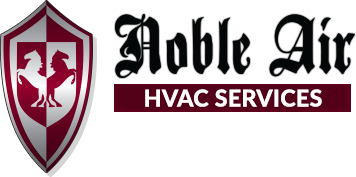If there’s one thing about living in Phoenix, it’s the striking difference between the heat of the summer months and the overnight lows in the winter. With the average lows falling to the low 40’s overnight, your central air and heat system will play an important role in keeping you and your family comfortable. In most central, ducted systems, there are two distinct units which cool and heat residential homes: the air conditioning unit, which typically is placed outside, and, the furnace, which generally is located in the garage or another out-of-the-way place inside the home.
Top Reasons Central Heat doesn’t Work
Of course, any central residential HVAC system is supposed to provide cool air when it’s warm outside and heat when the outside temperature drops. Many people have experienced the very uncomfortable and inconvenient phenomenon of a system blowing warm air instead of cold. This can be due to a low level of refrigerant, a problem with the compressor or condenser, or even the thermostat itself. However, not as many people have experienced a central heating system that doesn’t work.
To troubleshoot your central heating unit, start with the simple things that go wrong and work up from there. To help keep costs down, isolate or identify any problems you might have and fix the ones you can yourself. Sometimes, a little attention can prevent larger problems from occurring and might save you from having to call a heating repair professional. —San Francisco Chronicle
Though it isn’t as common, especially in this climate where heating is not as important as cooling, but, it does happen. Fortunately, the problem can isolated with a bit of do-it-yourself troubleshooting. However, this doesn’t necessarily mean you’ll be able to fix it on your own. Here are some of the top reasons central heat doesn’t work in your residential home and what you can do about it:
- No warm air delivery at all. If you turn your central heating system on and set it to the desired temperature but it doesn’t deliver any air, you’ll have to attempt to isolate the problem. It might be a tripped or bad breaker, an issue with the electrical wiring, or, it could be the unit itself no longer works. Basically, it’s probably either a power issue or the equipment is failing or has failed.
- Air isn’t warming to the set temperature. Should the air be circulating but the temperature isn’t warm, and the system isn’t operating at its normal efficiency, it could be leaks in the ductwork. In this case, the warm air is escaping where it shouldn’t and is being lost. If possible, check the ductwork and look for leaks from holes due to wear and tear or pests.
- Large fluctuations in temperature. When the unit delivers uneven temperatures, with rooms heating up and then being cooled in cycles, that could indicate the thermostat is malfunctioning. A thermostat that isn’t working correctly can send errant signals to the furnace, causing it to heat and and turn off when it shouldn’t do so. You can elect to install a programmable thermostat if the current one isn’t’ functioning properly.
- Filters are dirty or blocked. Like with the air conditioning unit, the furnace is also equipped with filters and when these become dirty or clogged, cause the system to lose its efficiency, in turn, not delivering warm air to the home.
- Pilot light does not ignite. Another thing to check is the pilot light and/or the igniter. Turn the system completely off for five to seven minutes, then turn it back on again, watching the pilot light and igniter.
If you can’t locate the source of the problem or need professional assistance to repair your central heat, call us and we’ll send an experienced technician out to your home to identify and fix the problem right away. We’ll save you the trouble and risk of using space heaters.

